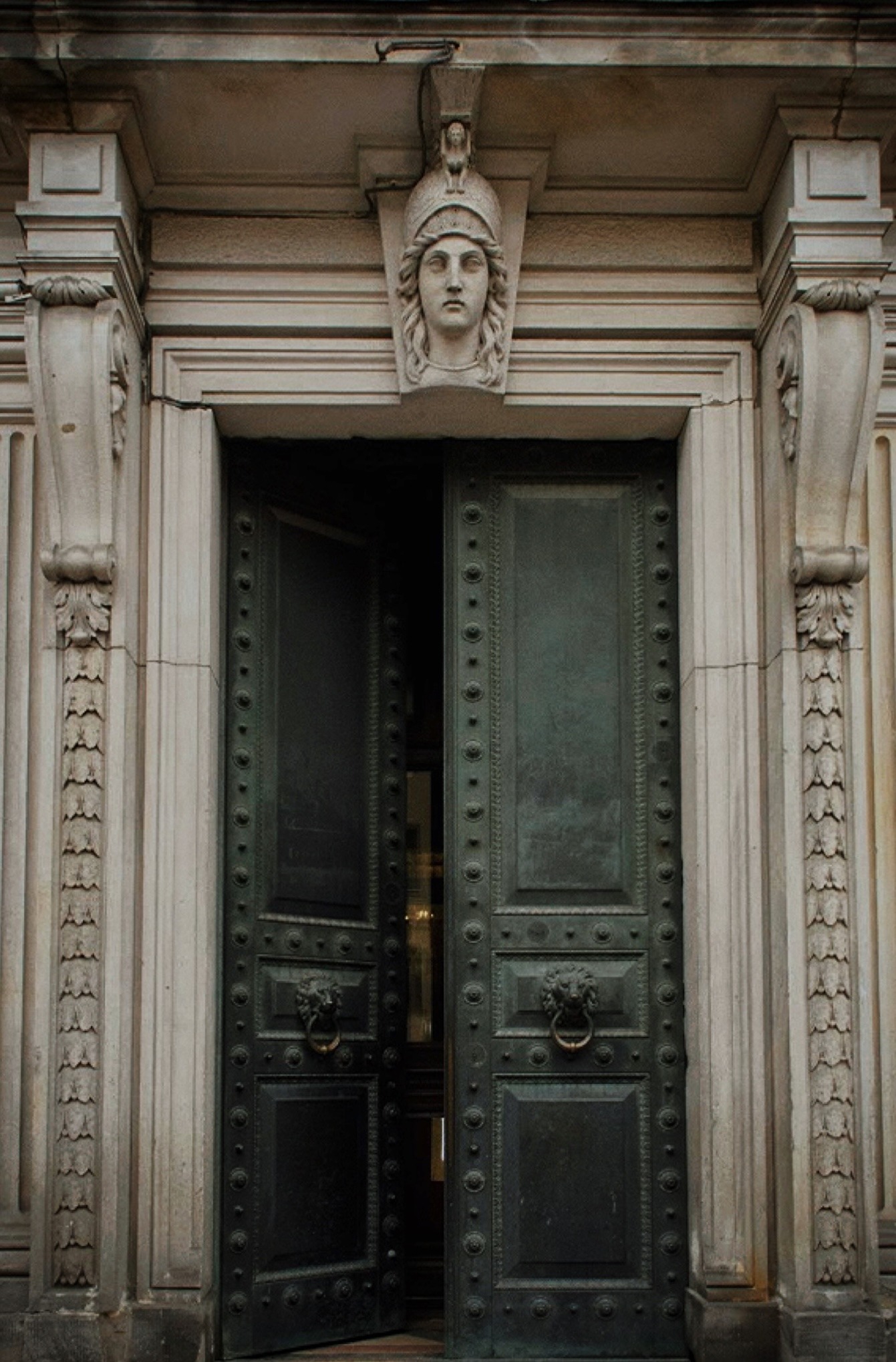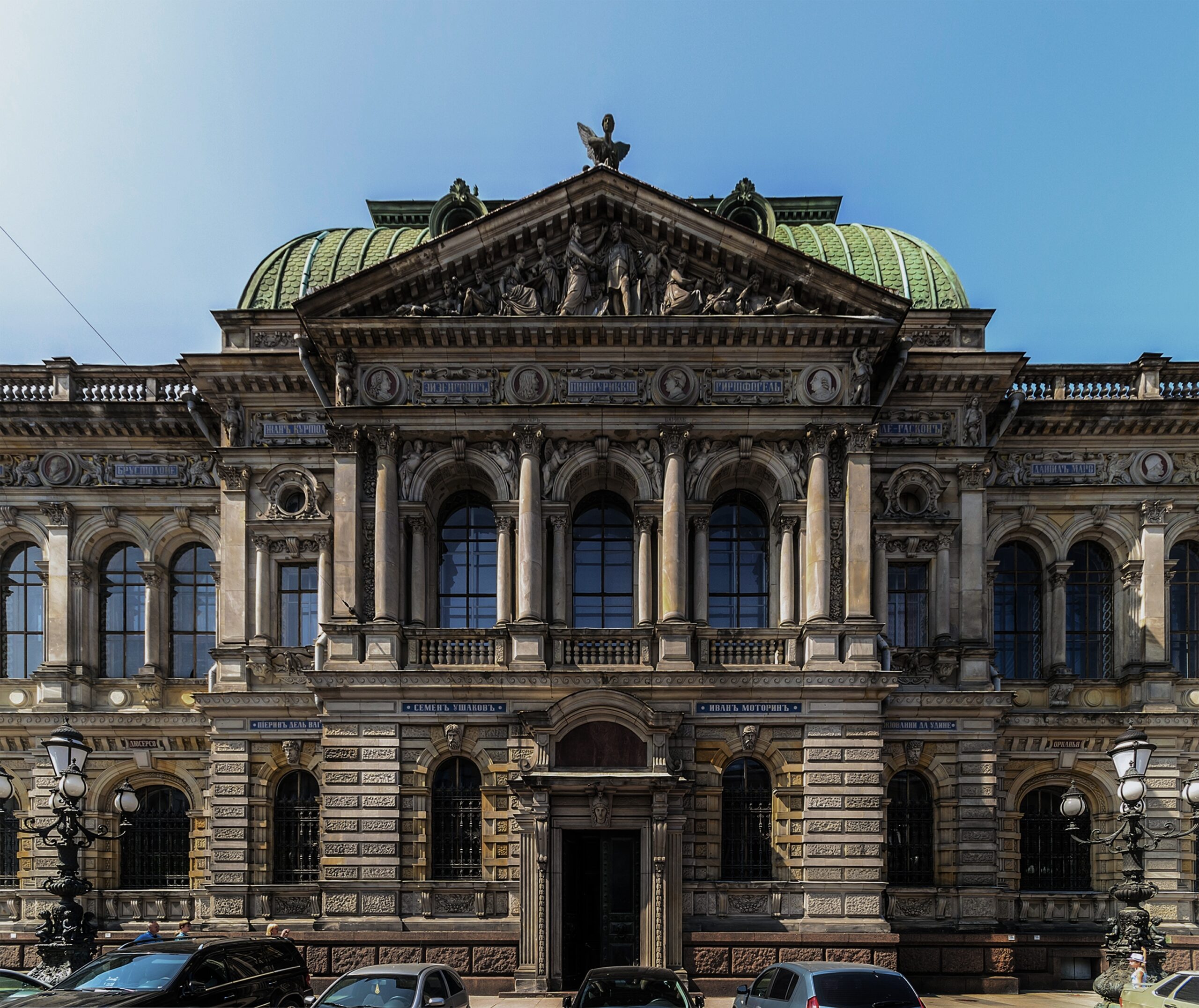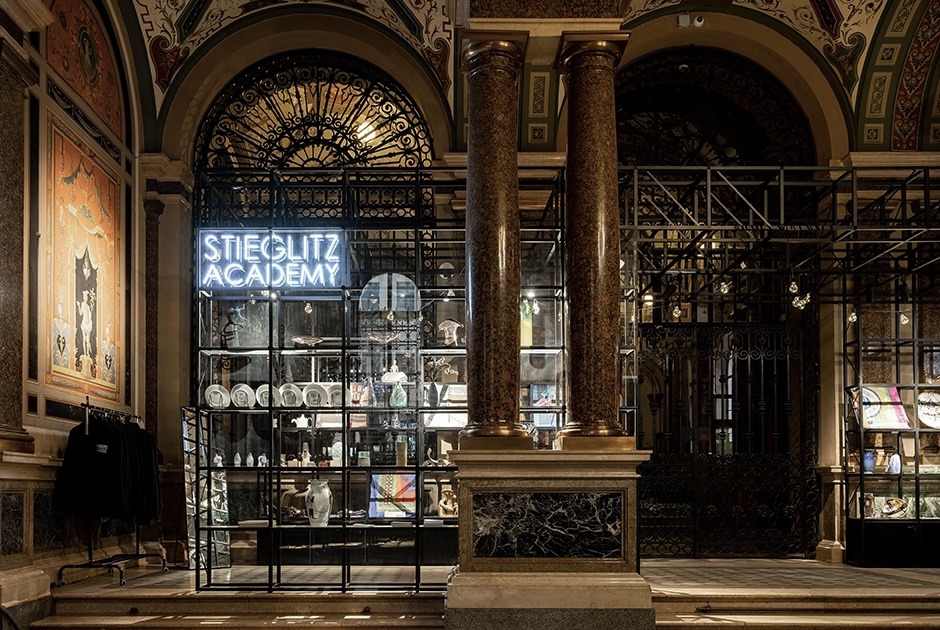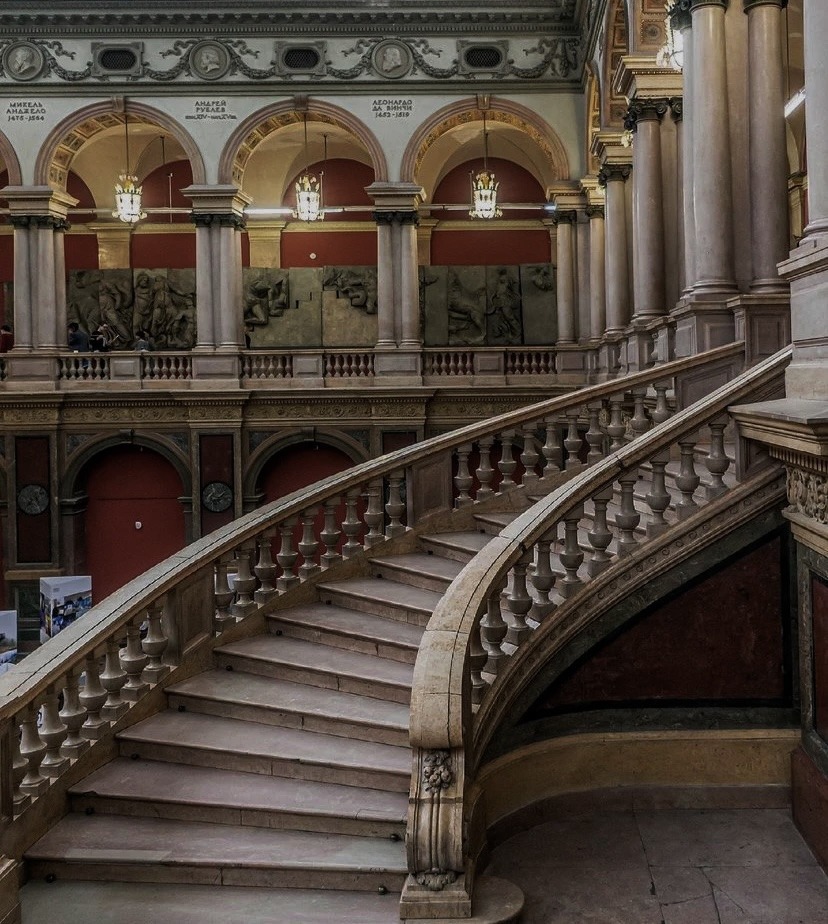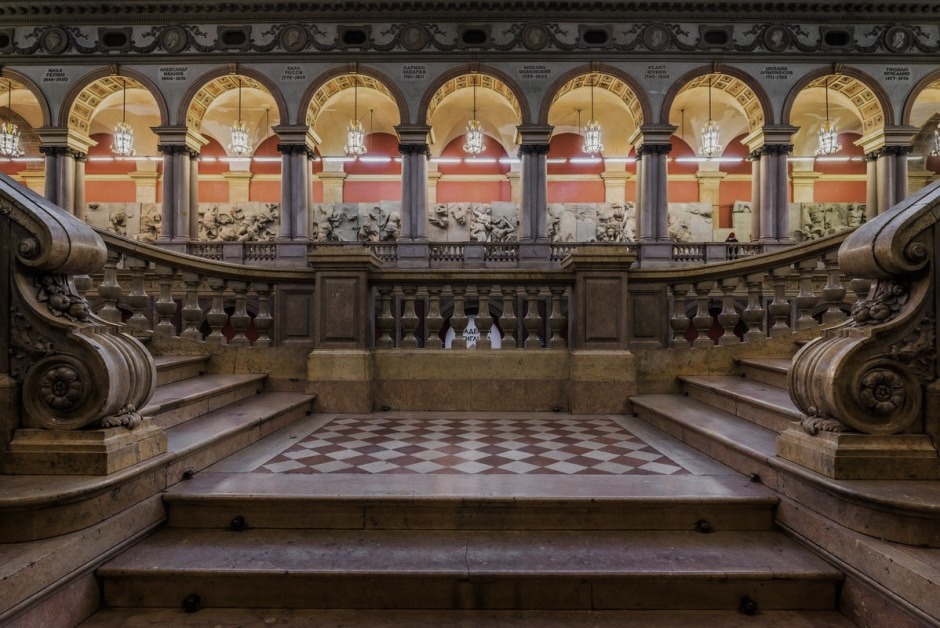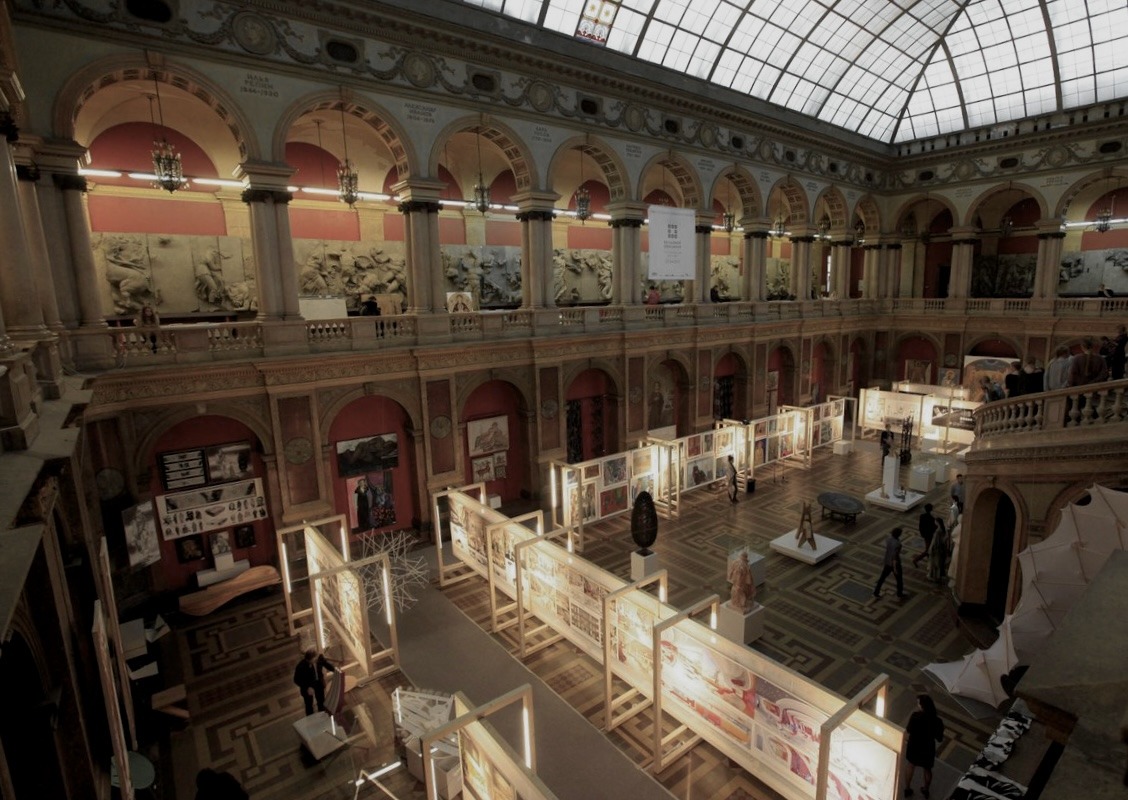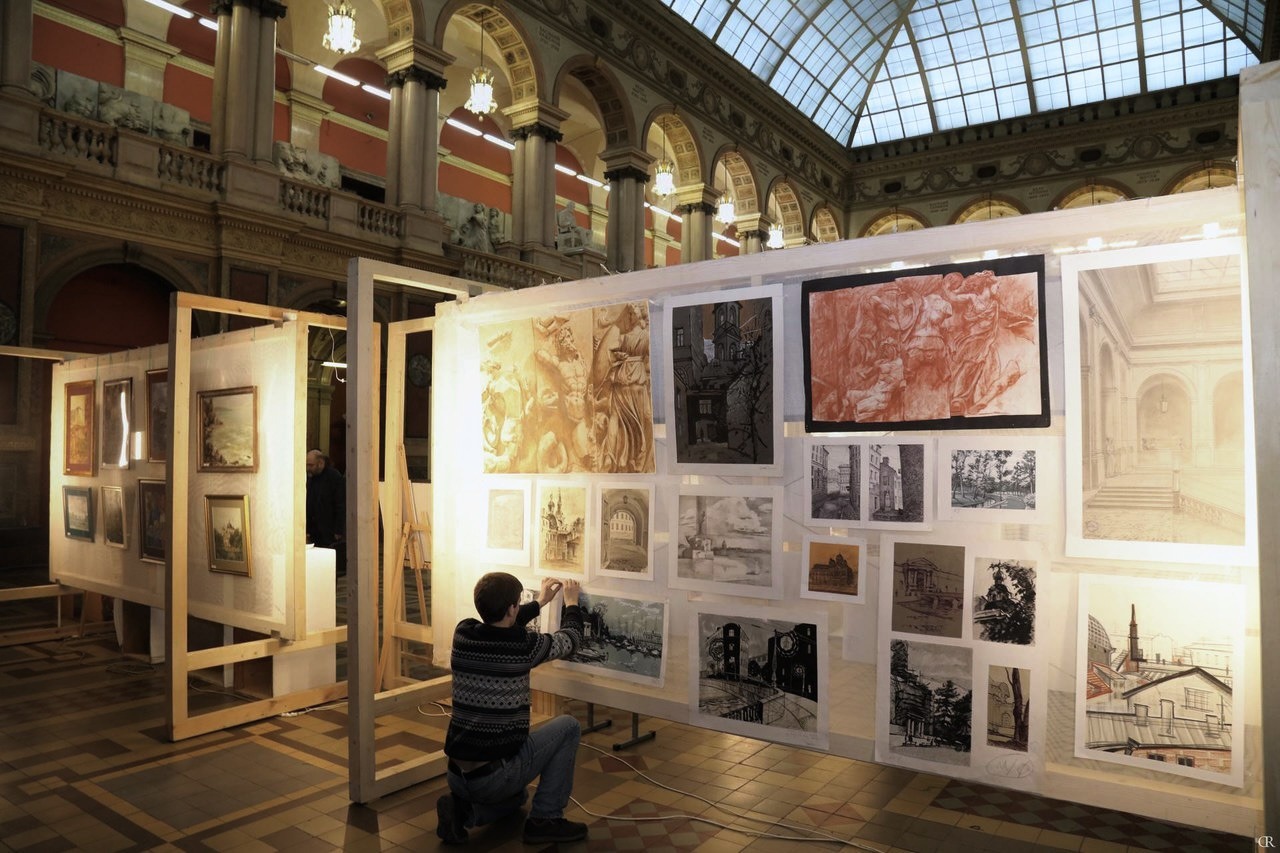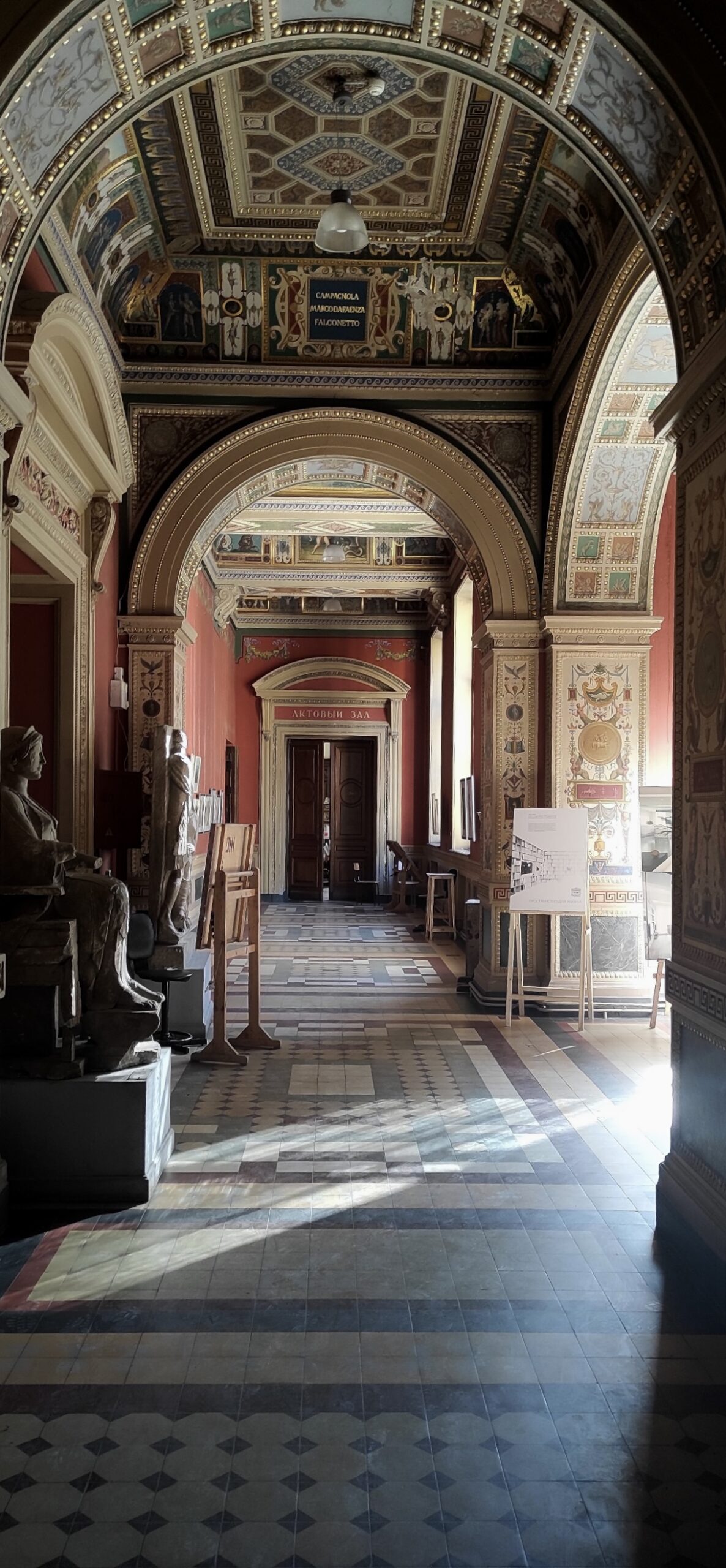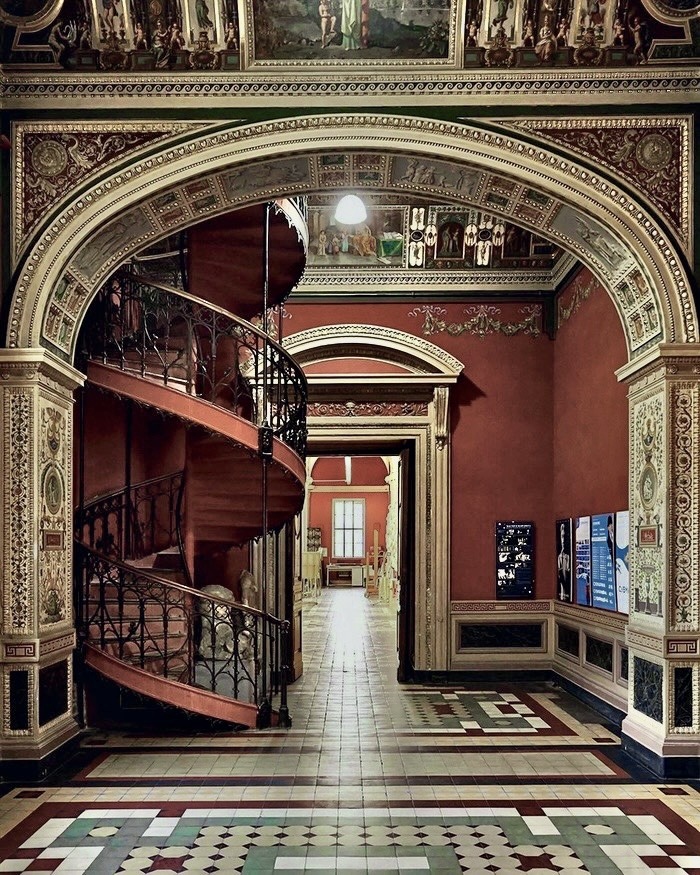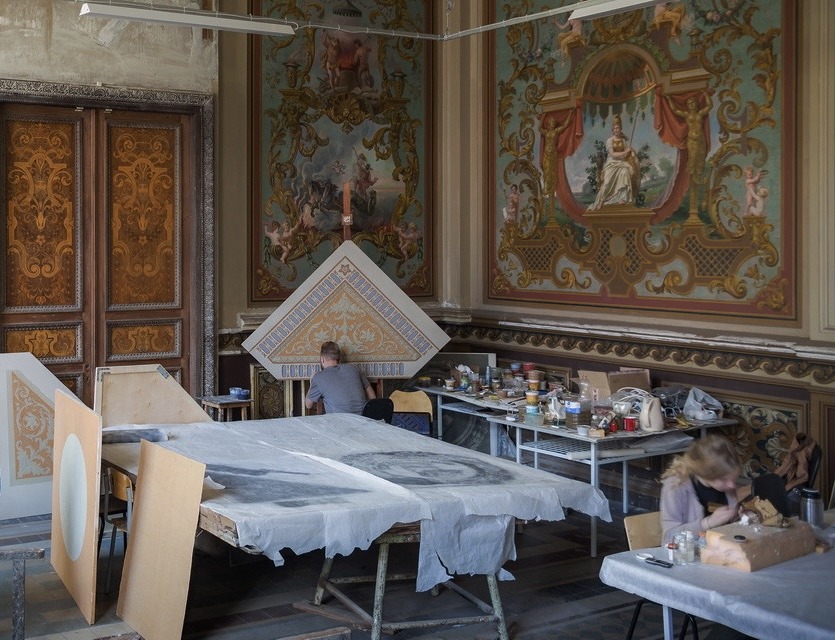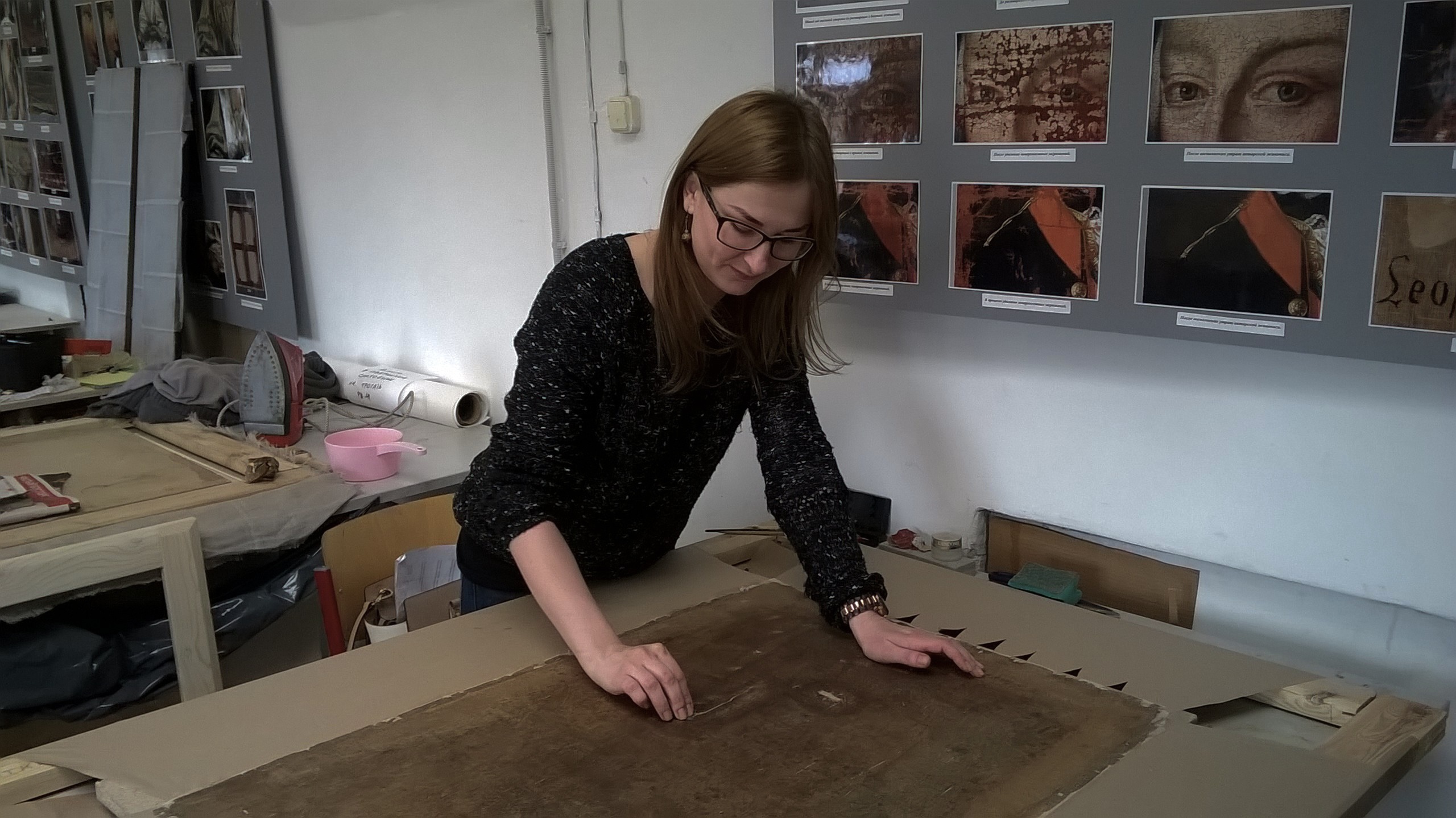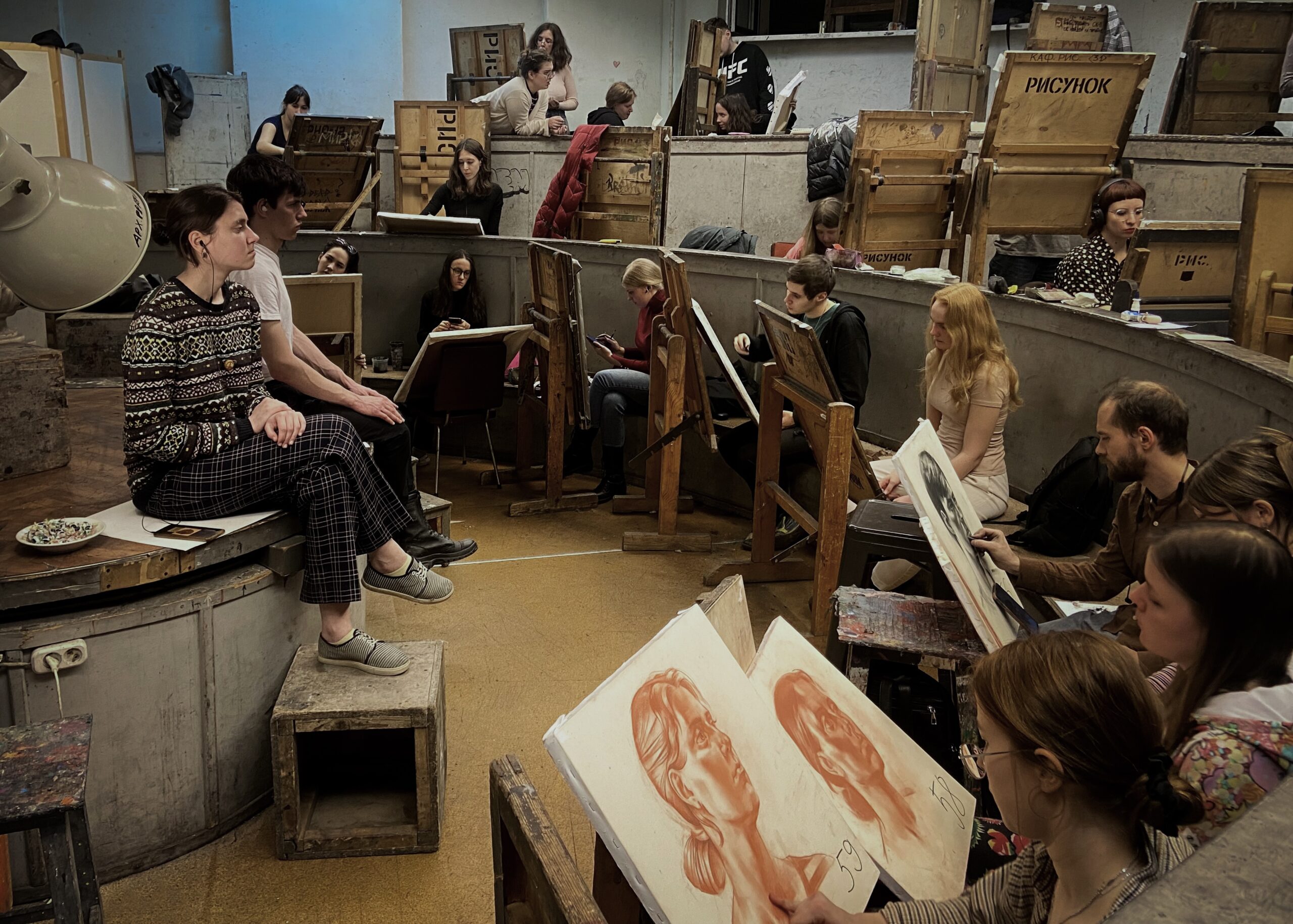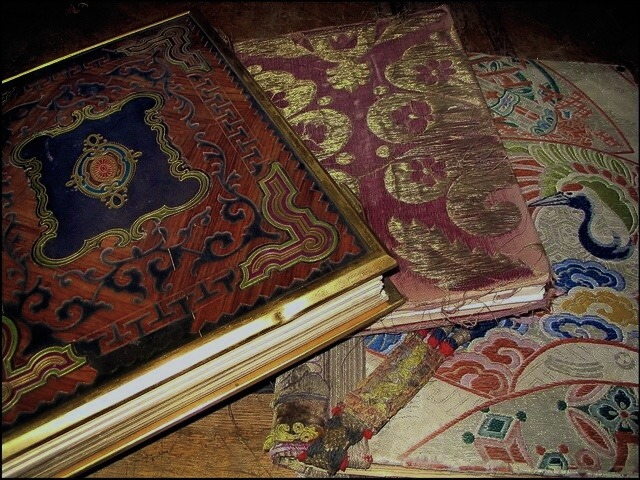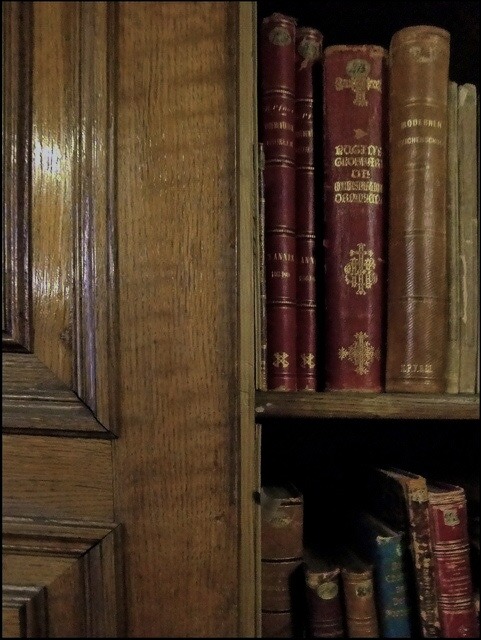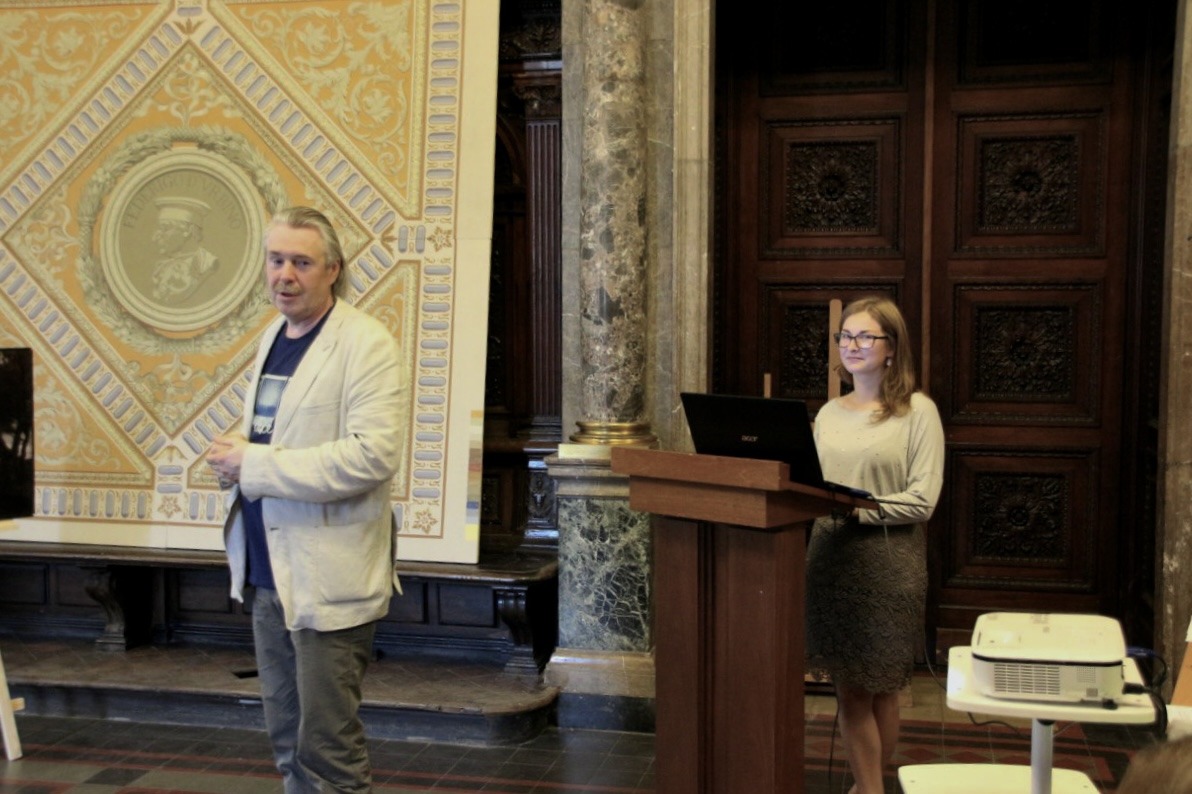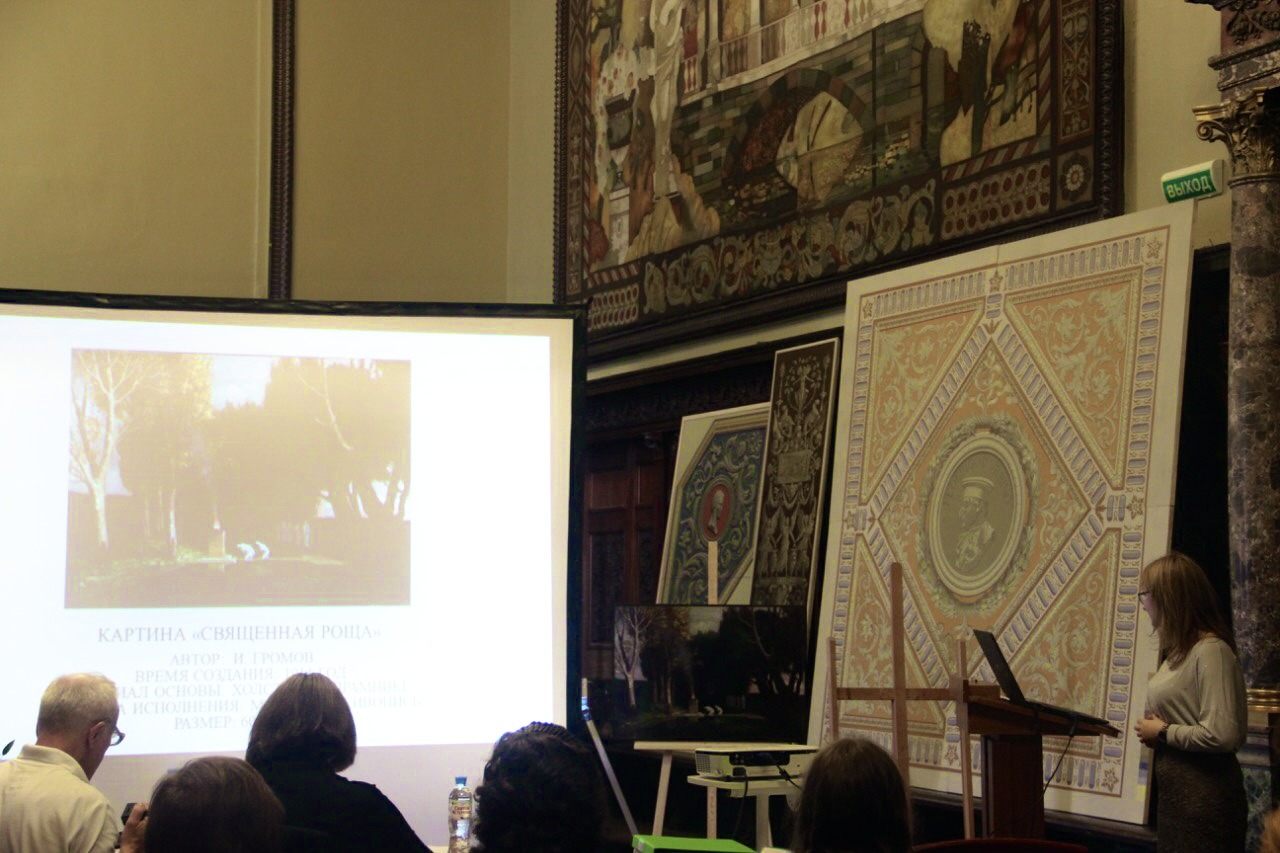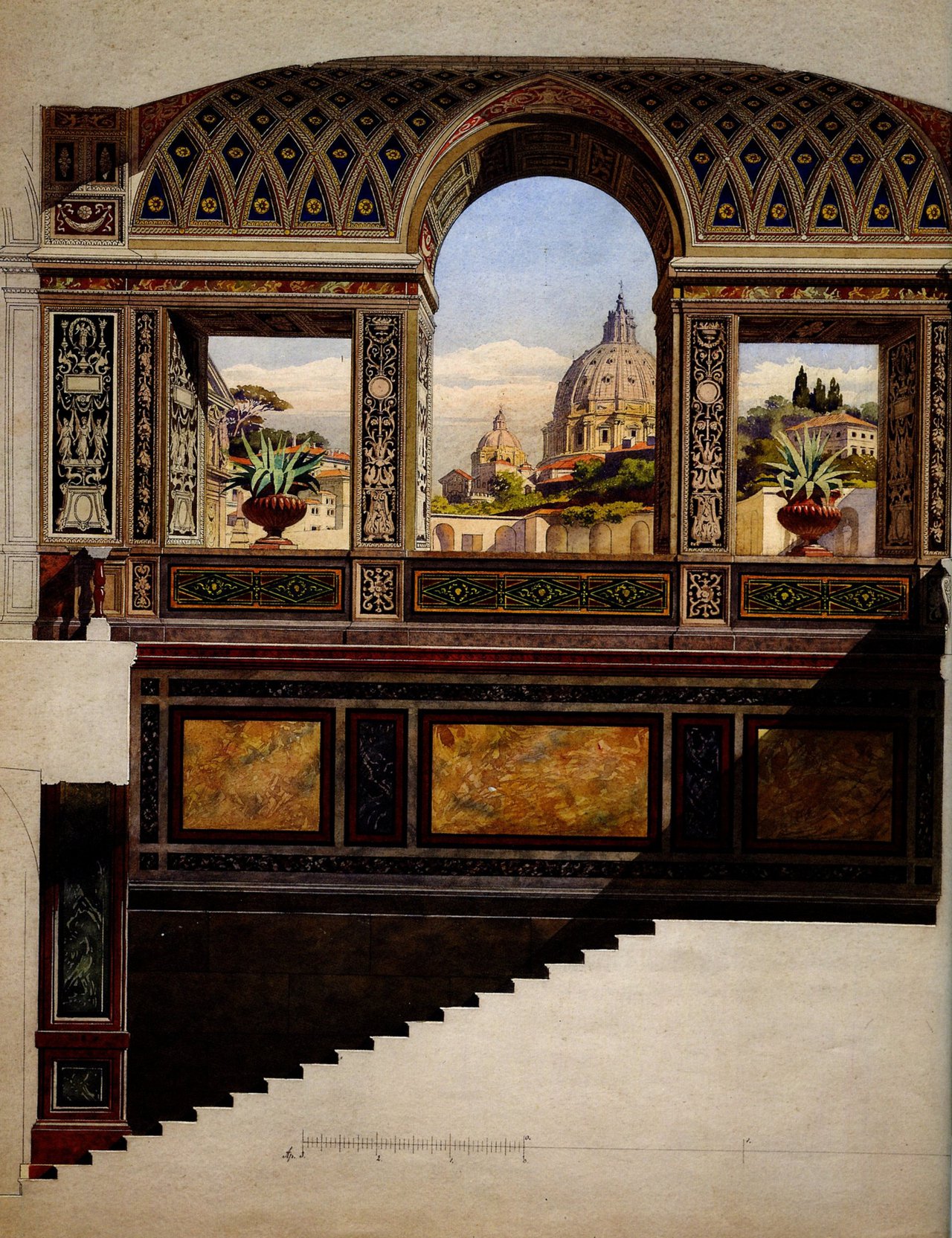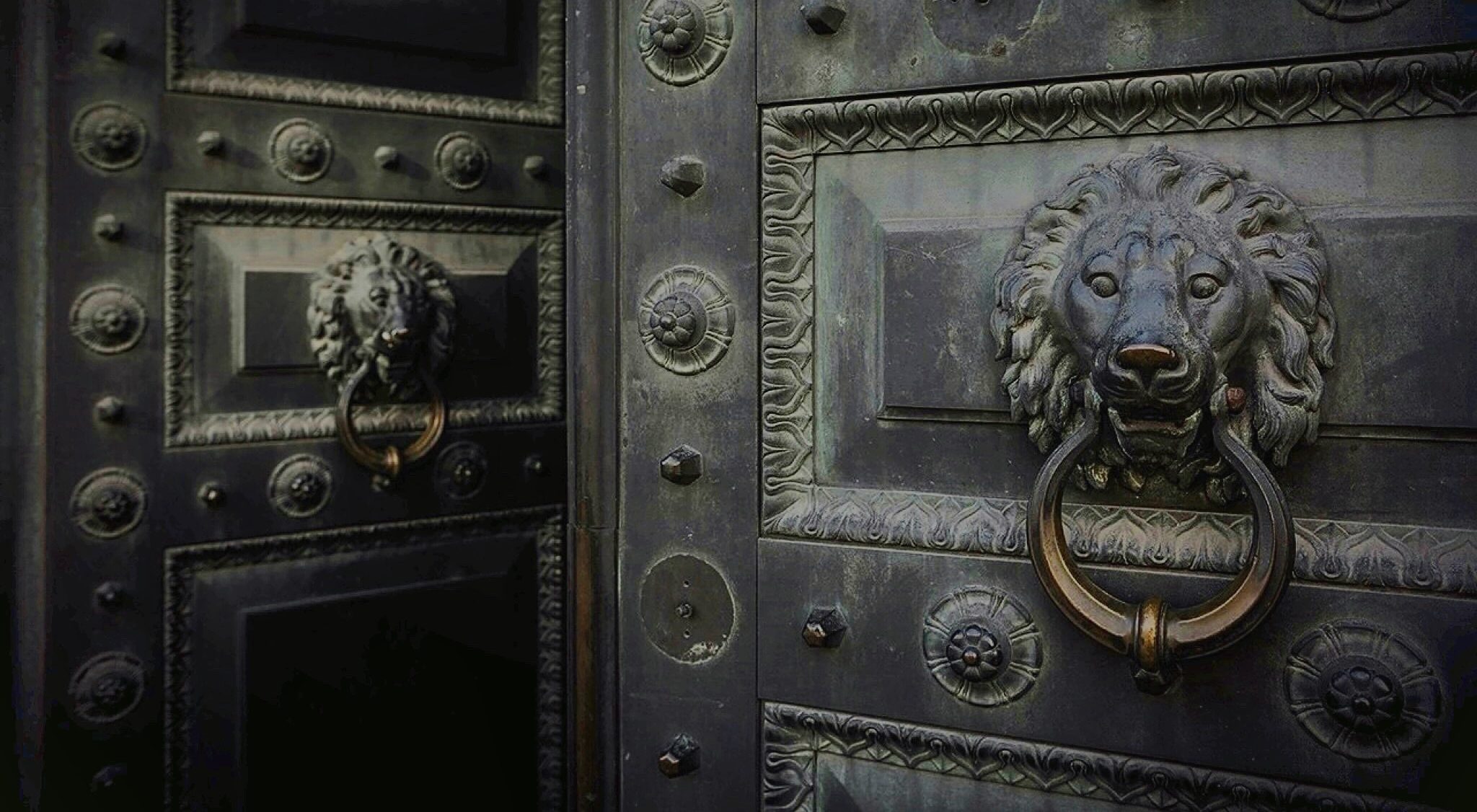Art lives under painted and stucco ceilings. In every corridor, in every place, there is the memory of generations of outstanding creators who trampled the stone staircase to the undulating recess, along which you now climb to the auditorium.
It is impossible to learn from books how to blow glass, sculpt a sculpture, assemble a mosaic or restore a painting. The craft is passed from hand to hand in forges, workshops, on the upper floors of the restoration department and in the cellars of jewelers.
Sculptors are working on clay , a new car project is being drawn in the design building, textile workers are weaving tapestries, and someone is breathing life into a picture almost carried away by time.
A treasure box under a glass dome
Krakau and R. A. Gedike were the creators of the Academy’s first and main building, which by that time included a small museum. However, the museum’s collections grew at such a rapid rate that it was necessary to think about building a separate museum complex.
Such a task was entrusted to the outstanding architect of his era, Mesmacher, who built buildings and interiors that anticipated the buildings of that era by decades.
Mesmacher was above all an educator – in architecture, graphics, museum work, teaching, in everything his creative mind came into contact with.
As his contemporaries wrote, the public had never known anything like it, neither in thought nor in the richness of artistic design. By the way, M. Mesmacher immortalised himself on the pediment of the building, the facades of which are decorated with portraits and names of outstanding masters of different countries and times.

Stained glass stieglitz academy
When Mesmacher was designing the building of the Museum of Applied Arts, the idea belonging to Gottfried Semper was in the air: the supremacy of architecture over other kinds of art. I think that Mesmacher shared this idea and therefore created a real textbook of architectural styles in the building.
The museum building, which was Mesmacher’s main brainchild and last construction, is a unique monument. Despite the stylistic diversity of the interior, which represented the art of the Greco-Roman, Byzantine, Romanesque and Gothic periods, German and French Baroque styles, Mesmacher still singled out Italian Renaissance architecture as the leading theme.
Almost all the interior decoration works were carried out by students and teachers of the academy. The interior of each room was thought out with special care, taking into account the era to which the numerous exhibits belonged.
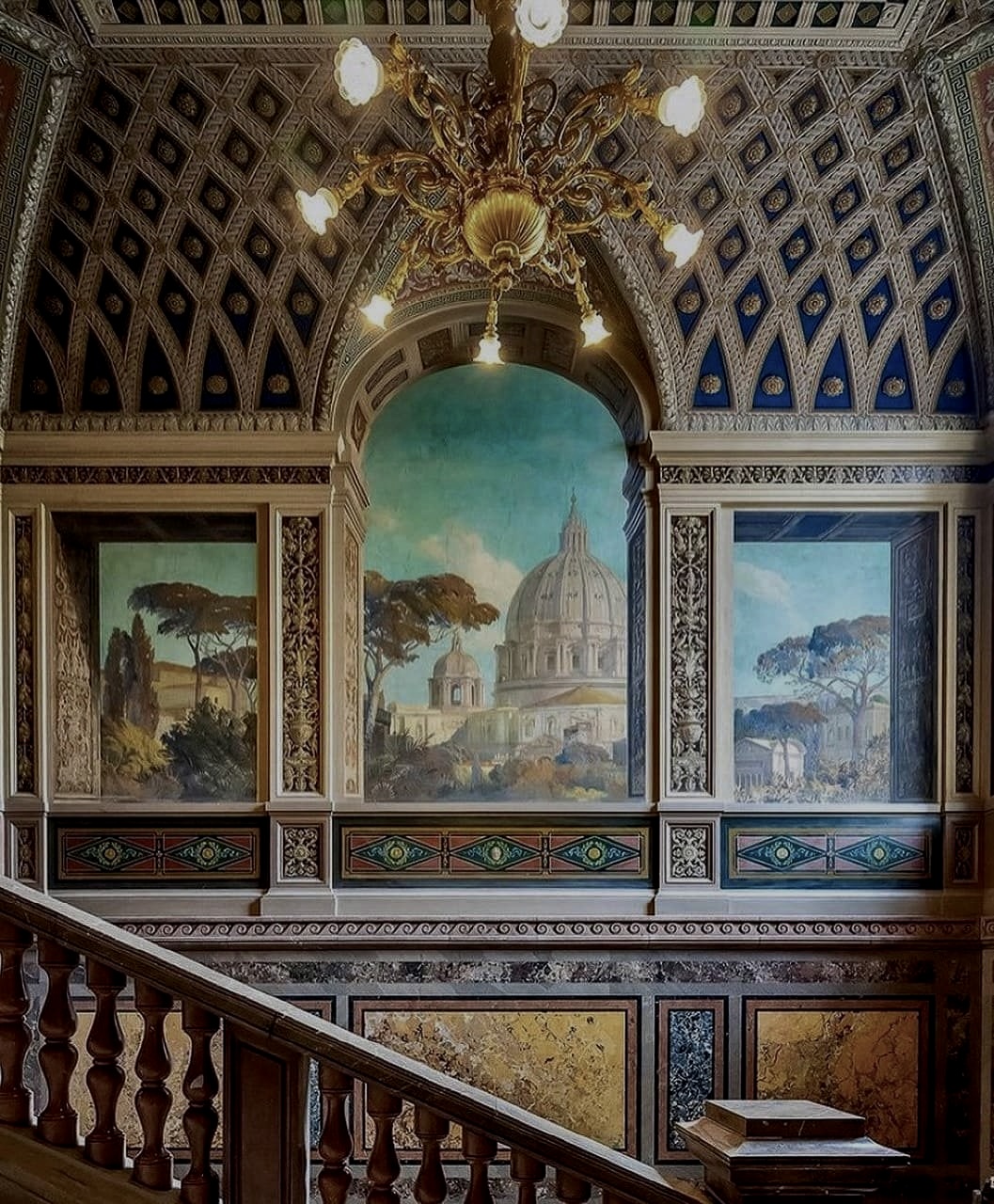
The Venetian Hall stieglitz academy
Mesmacher formed the collections himself, buying art objects on trips abroad and at auctions.
The 32 halls of the museum reveal to students the history of the development of various branches of applied art: textiles, sewing, wood, stone and bone carving, tapestries, porcelain, faience, glass and majolica from the very moment of their inception to the 19th century.
М. Mesmacher created not just a museum, but a visual guide to the history of the development of applied art.
For him the museum was an integral element of knowledge, education of students’ artistic taste through acquaintance with the best examples of decorative and applied art. He wanted to give students the opportunity not just to look at them from the outside, but to join the secrets of the craft, unravelling their mysteries, immersing themselves as much as possible in the appropriate historical atmosphere.
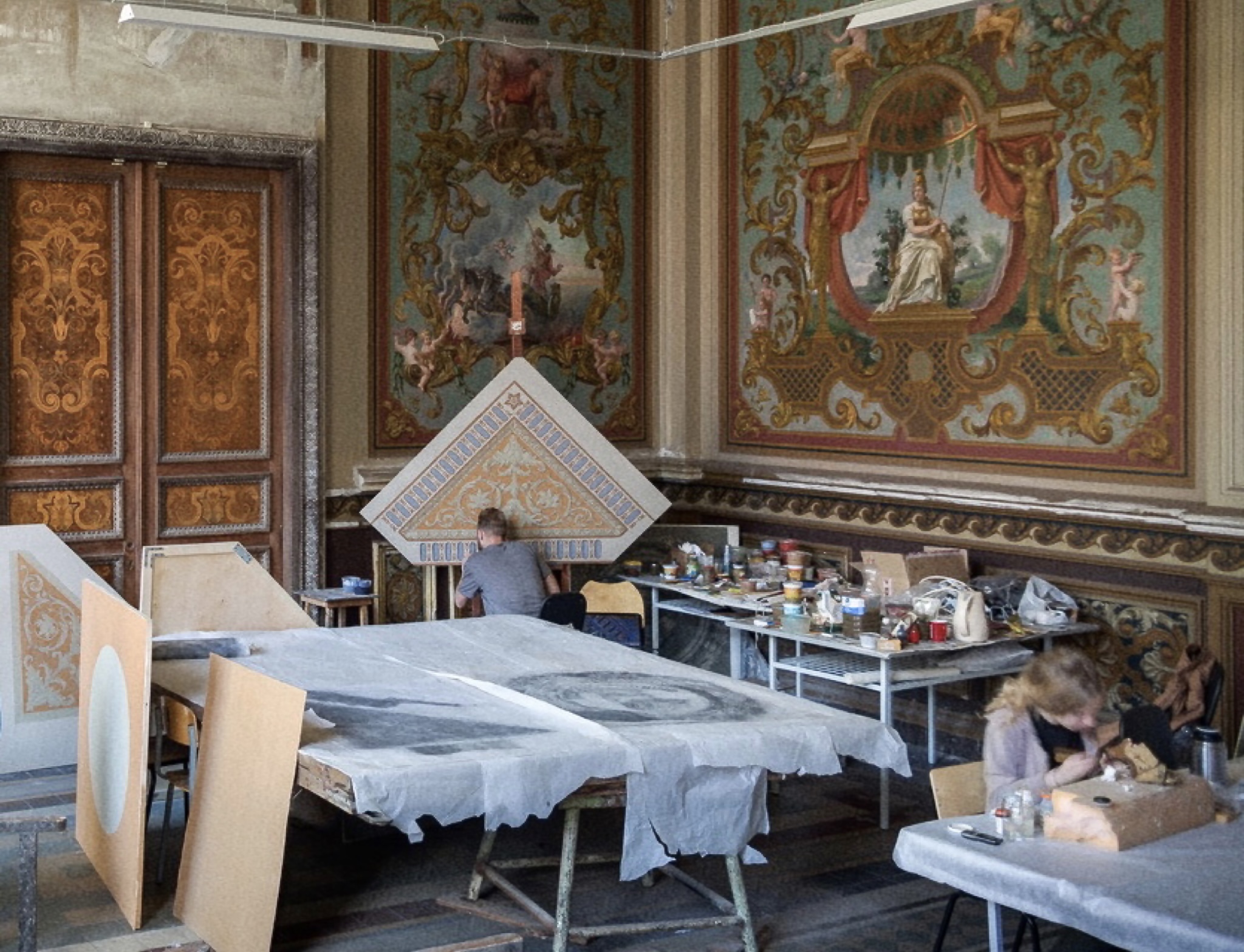
Louis XIV Hall. Restoration workshop stieglitz academy
The most magical time at the Academy is the last days of termly screenings, when students have been awake for three days, creating new works without ceasing. The Academy turns into a huge buzzing hive and at the same time into a huge and endless exhibition hall. Viewings of each department take place in different places, our restoration department was assigned the youth hall.
The Youth Hall is the compositional centre of the building, its main dominant feature, a real palazzo; there is a special rhythm of columns and always different light coming from the dome, once decorated with multicoloured stained glass windows, which seems to change the size of the space, at the same time grandiose and cosy.
On the upper landing of the staircase a snow-white marble statue of Baron A.L. Stieglitz, a great admirer of the arts and the founder of the Academy, looks at the students. By the way, there is a belief among students that you can walk only on the left side of the staircase: the Muse walks on the right side and it is better not to disturb her so as not to scare her away.

Floor of the sculpture faculty stieglitz academy
One of the outstanding exhibits located on the first floor of the Youth Hall Gallery is a life-size plaster copy of the famous frieze of the Pergamon Altar of extraordinary artistic value, the original of which is in Berlin, in a museum specially created for it.
This masterpiece of Hellenistic art was once deposited in the Hermitage, but in 1958 it was transferred back to Germany. However, a plaster copy of the Altar remained in the Hermitage’s storerooms, casts of which were made from the original by teachers of the Stieglitz Academy. In 2002 the copy of the Altar was given to the Academy as a gift for its 125th anniversary and was installed in the gallery of the central hall.
Since then, students have had the opportunity to hone their drawing techniques using it as a model, admiring the skill of the ancients and their ability to convey inner tension in the figures carved in marble.
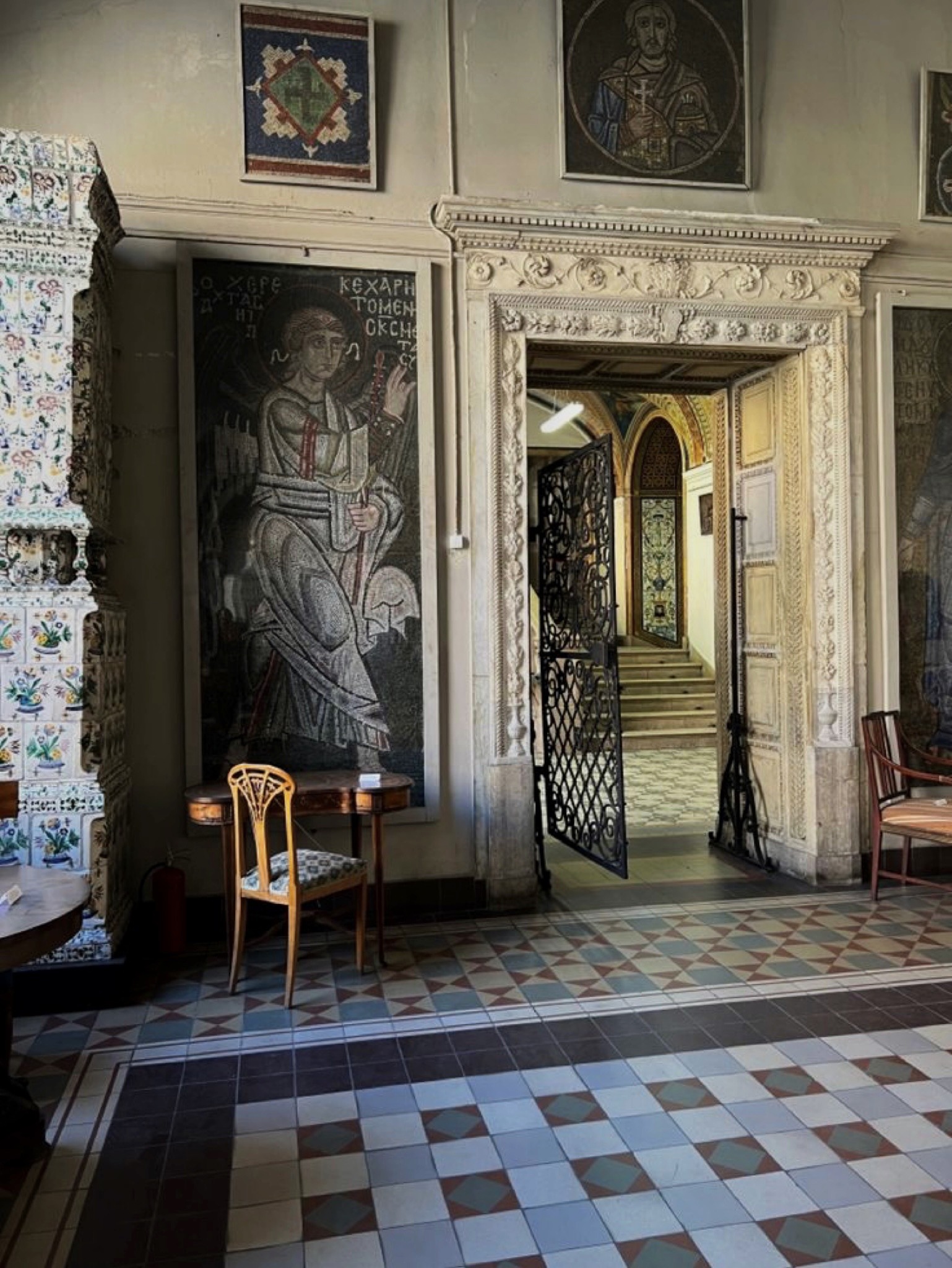
The museum
stieglitz academy
The spirit of the Academy shapes the actions of those who are here, teachers and students alike, it permeates everything, every corner, hall, staircase, monument and even the doorknobs.
Art lives under painted and stucco ceilings. In every corridor, in every place, there is the memory of generations of outstanding creators who trampled the stone staircase to the undulating recess, along which you now climb to the auditorium. It is impossible to learn from books how to blow glass, sculpt a sculpture, assemble a mosaic or restore a painting. The craft is passed from hand to hand in forges, workshops, on the upper floors of the restoration department and in the cellars of jewelers. Sculptors are working on clay , a new car project is being drawn in the design building, textile workers are weaving tapestries, and someone is breathing life into a picture almost carried away by time.
Academy
A TREASURE BOX UNDER A GLASS DOME
Krakau and R. A. Gedike were the creators of the Academy’s first and main building, which by that time included a small museum. However, the museum’s collections grew at such a rapid rate that it was necessary to think about building a separate museum complex.
Such a task was entrusted to the outstanding architect of his era, Mesmacher, who built buildings and interiors that anticipated the buildings of that era by decades.
Mesmacher was above all an educator – in architecture, graphics, museum work, teaching, in everything his creative mind came into contact with.
As his contemporaries wrote, the public had never known anything like it, neither in thought nor in the richness of artistic design. By the way, M. Mesmacher immortalised himself on the pediment of the building, the facades of which are decorated with portraits and names of outstanding masters of different countries and times.
When Mesmacher was designing the building of the Museum of Applied Arts, the idea belonging to Gottfried Semper was in the air: the supremacy of architecture over other kinds of art. I think that Mesmacher shared this idea and therefore created a real textbook of architectural styles in the building.
The museum building, which was Mesmacher’s main brainchild and last construction, is a unique monument. Despite the stylistic diversity of the interior, which represented the art of the Greco-Roman, Byzantine, Romanesque and Gothic periods, German and French Baroque styles, Mesmacher still singled out Italian Renaissance architecture as the leading theme.
Almost all the interior decoration works were carried out by students and teachers of the academy. The interior of each room was thought out with special care, taking into account the era to which the numerous exhibits belonged.
Mesmacher formed the collections himself, buying art objects on trips abroad and at auctions.
The 32 halls of the museum reveal to students the history of the development of various branches of applied art: textiles, sewing, wood, stone and bone carving, tapestries, porcelain, faience, glass and majolica from the very moment of their inception to the 19th century.
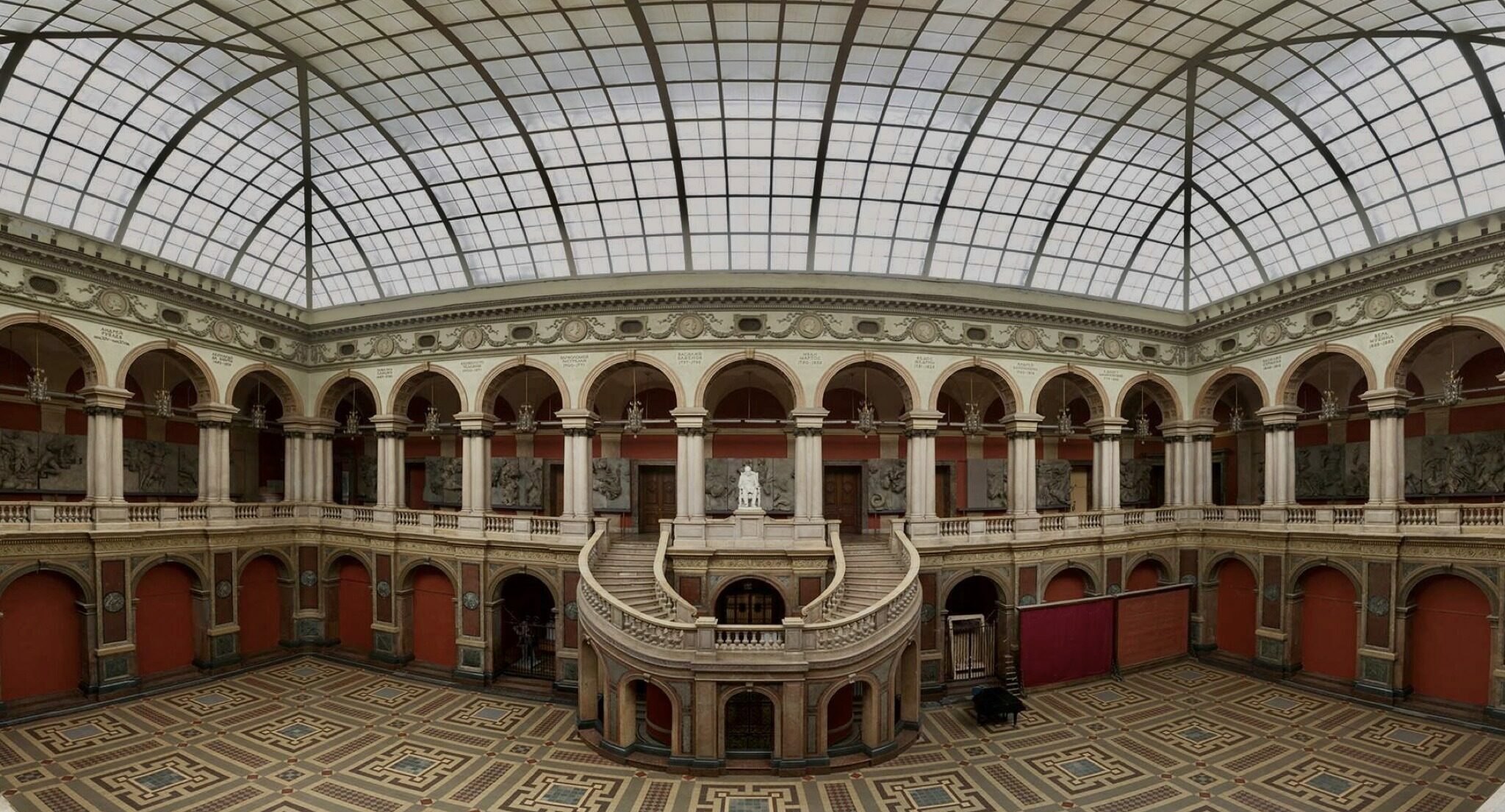
Youth Hall. STIEGLITZ ACADEMY
Mesmacher created not just a museum, but a visual guide to the history of the development of applied art.
For him the museum was an integral element of knowledge, education of students’ artistic taste through acquaintance with the best examples of decorative and applied art. He wanted to give students the opportunity not just to look at them from the outside, but to join the secrets of the craft, unravelling their mysteries, immersing themselves as much as possible in the appropriate historical atmosphere.
The most magical time at the Academy is the last days of termly screenings, when students have been awake for three days, creating new works without ceasing. The Academy turns into a huge buzzing hive and at the same time into a huge and endless exhibition hall. Viewings of each department take place in different places, our restoration department was assigned the youth hall.
The Youth Hall is the compositional centre of the building, its main dominant feature, a real palazzo; there is a special rhythm of columns and always different light coming from the dome, once decorated with multicoloured stained glass windows, which seems to change the size of the space, at the same time grandiose and cosy.
On the upper landing of the staircase a snow-white marble statue of Baron A.L. Stieglitz, a great admirer of the arts and the founder of the Academy, looks at the students. By the way, there is a belief among students that you can walk only on the left side of the staircase: the Muse walks on the right side and it is better not to disturb her so as not to scare her away.
One of the outstanding exhibits located on the first floor of the Youth Hall Gallery is a life-size plaster copy of the famous frieze of the Pergamon Altar of extraordinary artistic value, the original of which is in Berlin, in a museum specially created for it.
This masterpiece of Hellenistic art was once deposited in the Hermitage, but in 1958 it was transferred back to Germany. However, a plaster copy of the Altar remained in the Hermitage’s storerooms, casts of which were made from the original by teachers of the Stieglitz Academy. In 2002 the copy of the Altar was given to the Academy as a gift for its 125th anniversary and was installed in the gallery of the central hall.
Since then, students have had the opportunity to hone their drawing techniques using it as a model, admiring the skill of the ancients and their ability to convey inner tension in the figures carved in marble.
The spirit of the Academy shapes the actions of those who are here, teachers and students alike, it permeates everything, every corner, hall, staircase, monument and even the doorknobs.
